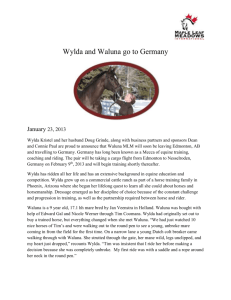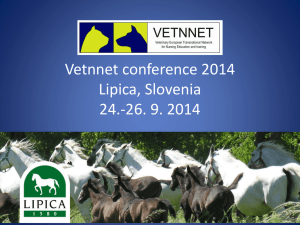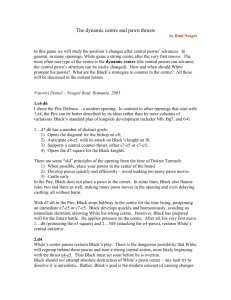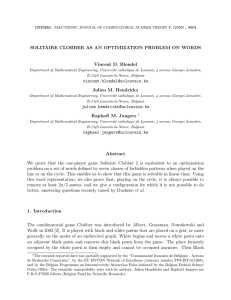Asexual v Sexual Reproduction In order for a species to evolve
advertisement
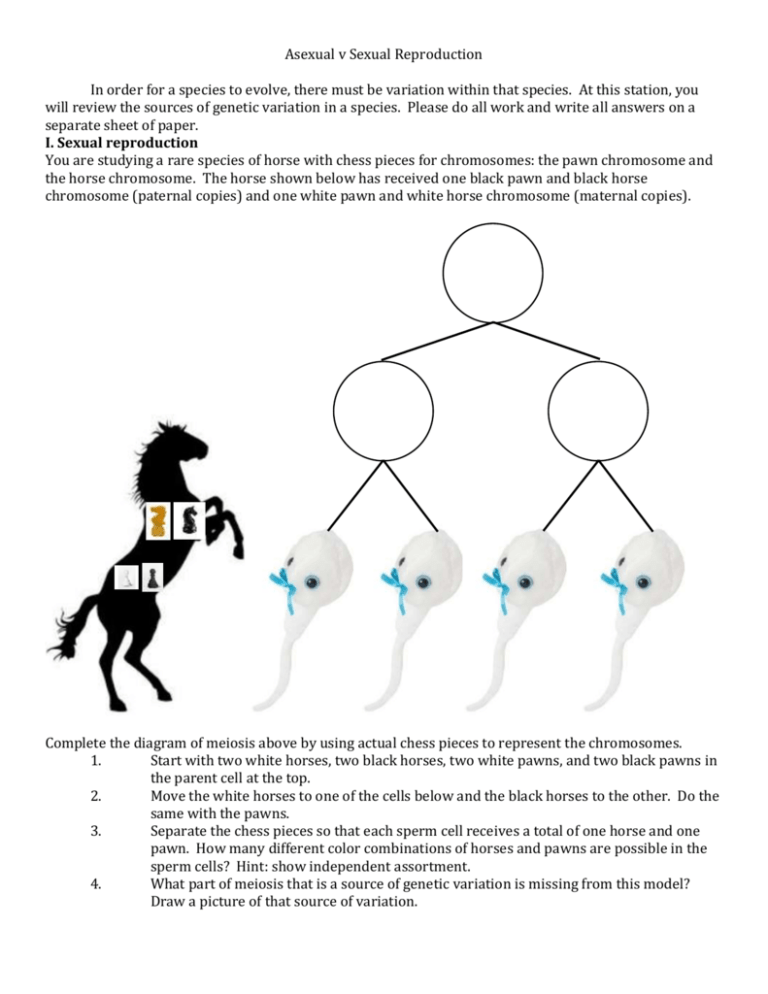
Asexual v Sexual Reproduction In order for a species to evolve, there must be variation within that species. At this station, you will review the sources of genetic variation in a species. Please do all work and write all answers on a separate sheet of paper. I. Sexual reproduction You are studying a rare species of horse with chess pieces for chromosomes: the pawn chromosome and the horse chromosome. The horse shown below has received one black pawn and black horse chromosome (paternal copies) and one white pawn and white horse chromosome (maternal copies). Complete the diagram of meiosis above by using actual chess pieces to represent the chromosomes. 1. Start with two white horses, two black horses, two white pawns, and two black pawns in the parent cell at the top. 2. Move the white horses to one of the cells below and the black horses to the other. Do the same with the pawns. 3. Separate the chess pieces so that each sperm cell receives a total of one horse and one pawn. How many different color combinations of horses and pawns are possible in the sperm cells? Hint: show independent assortment. 4. What part of meiosis that is a source of genetic variation is missing from this model? Draw a picture of that source of variation. 5. Imagine that a female horse has the same chromosomes as the male shown above. Use a Punnett square to show all possible combinations of sperm and egg cells between these horses. II. Asexual reproduction The checkers bacteria reproduces asexually. They just have one chromosome: the checkers chromosome. Show reproduction happening in the checkers bacteria: 1. Start with one checkers piece on the first bacteria. 2. Add another identical checkers piece to show DNA replication. 3. Slide one piece to each new bacterium. 4. The new bacteria have exactly the same DNA; they are clones. Compare and Contrast 1. Suddenly, global warming starts to occur in the land where the horses and bacteria live. Which of the two organisms is more likely to have at least some individuals survive in the warmer climate? 2. 100 years after global warming began, which species is more likely to have evolved adaptations to the warm climate? Why? 3. How does the level of genetic diversity in each species affect its ability to survive and evolve? 4. What source of genetic variation occurs in all organisms? 5. Explain the connection between heritable variation and evolution on your mind map. Raise your hand when you are finished.





